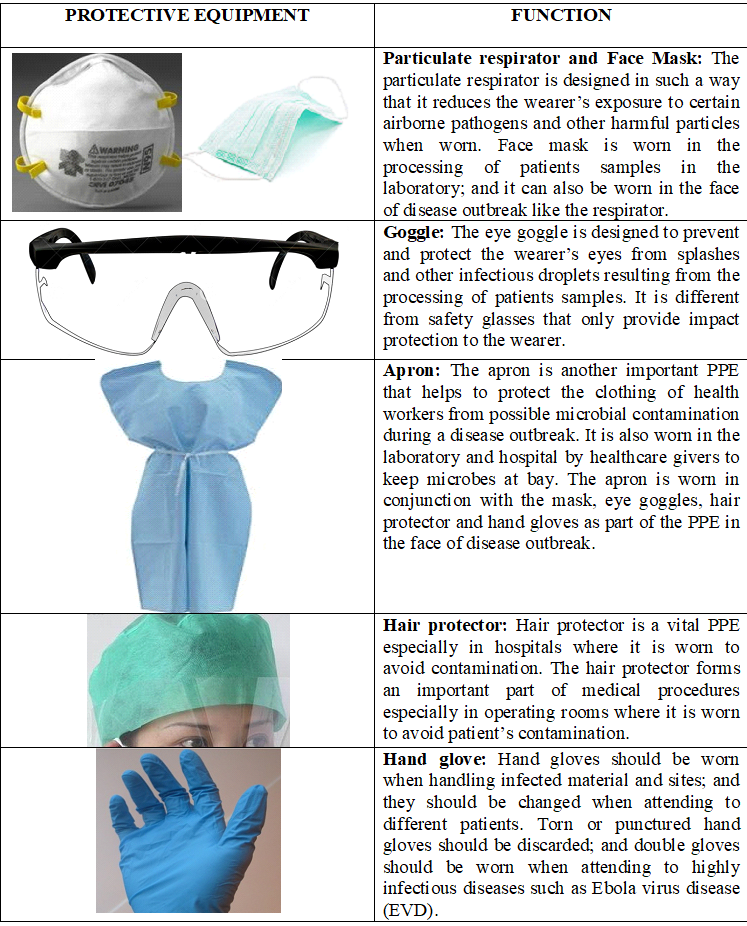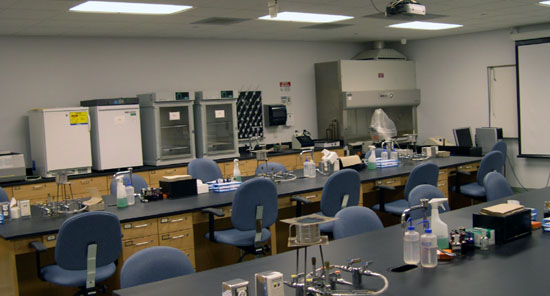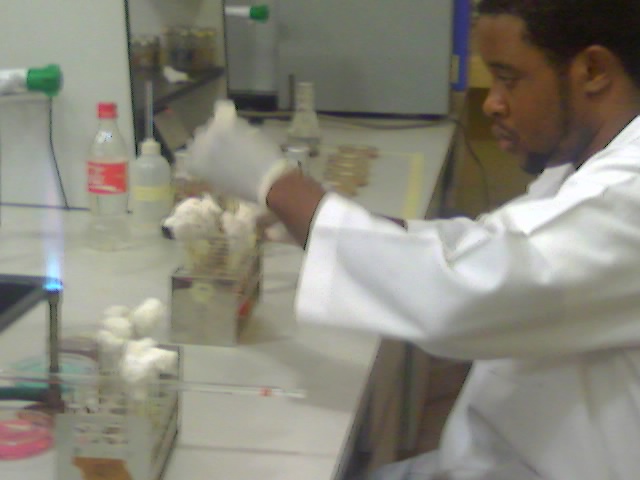Safety in the clinical microbiology laboratory should not be taken for granted. It is paramount that scientists including those visiting the laboratory for one task or the other and students on training imbibe and keep to all safety measures in order to avoid being infected by microorganisms. Laboratory workers, scientists and technicians working in the clinical microbiology laboratory can become infected with some dangerous microorganisms and this might eventually result to hospitalization or death if the situation goes out of control.
Scientists working in the microbiology laboratory should have a firsthand knowledge and be fully aware of the possible dangers related to the microorganisms and patients specimens they handle in the course of their work. They should also ensure that good laboratory practices and protocols are religiously followed to avoid pathogenic microorganisms from gaining entry into their body.
When pathogenic microorganisms and/or highly infectious specimens are not properly handled in the microbiology laboratory, virulent strains of microbes escape and enter the environment or community where they cause disease outbreak. Laboratory gowns should not be worn outside the microbiology laboratory and into the community because it can serve as route via which potential and harmful microorganisms spread to susceptible human population.
A nosocomial pathogen can be exported from the hospital environment to the community through health personnel’s, working equipment, or via laboratory gowns and this can result to the outbreak of an infection or disease in the community. Pathogenic microorganisms can enter the body through several parts of the body including the eyes, mouth, nose, skin (especially when there is a wound or cut on the skin) and even the lungs (via the inspiration of a contaminated air that contains spores of pathogenic microorganisms).
The clinical microbiology laboratory including other biomedical/scientific laboratories and even reference laboratories have different levels of containment of microorganisms; and these containment measures help to contain the spread of pathogenic microorganisms within and around the microbiology laboratory. The different laboratories are usually designated with different numbers (e.g. 1–4) depending on the level of hazards or risks that the work undertaken in such laboratories pose to the workers and to the community (non-laboratory environment) should incase there is an export or escape of pathogenic microorganisms from the laboratory to the community.
Organism’s hazard group number indicates the appropriate containment level of the organism in terms of working facility, laboratory equipments, laboratory techniques and the necessary precautions to be undertaken in such laboratory where these pathogens (microbes) are possibly found. Biological agents (inclusive of pathogenic microorganisms) are usually classified into different biosafety levels as shall be discussed in this section; and the reason for this classification according to biosafety levels is because of the potential risks which these agents pose to the environment and to human health.
Safety for the patient’s, hospital, and especially the laboratory staff is very important and should be given the utmost advocacy and acceptance by all. Some laboratory workers have either lost their lives or become infected by nosocomial pathogens in the course of their work in the laboratory simple because some precautionary measures necessary for the handling of pathogenic microorganisms and other harmful materials or specimens were not imbibed or strictly adhered to.
In addition, hospital workers including physicians, scientists, nurses and other caregivers should always ensure that they put on the correct protective clothing’s or wears when attending to their patients or analyzing their samples in order to forestall the possibility of disease contraction and spread within the hospital environment and even to the community (Table 1).
Table 1. Personal Protective Equipment/Wears for Hospital Workers

These protective materials are generally known as personal protective equipment (PPE); and they form vital part of infection control especially in the outbreak of highly infectious and deadly diseases. Personnel safety and that of the patient and other susceptible non-infected members of the community is vital in ending any disease outbreak; and it is important that health personnel’s involved in the containment of disease outbreak ensure that they put on the appropriate PPE in the discharge of their duties to avoid becoming infected by the causative agents of the disease or by the body fluids of infected patients. Physicians should always put on their donning gowns when attending to critical cases in the hospital as this will help in preventing disease contraction and spread (Figure 1).

A clean and safe laboratory is good for everybody because there will be proper containment of disease outbreak and the health of the laboratory personnel’s and that of other non-laboratory personnel who come in contact with the microbiology laboratory environment will also be ensured in such facilities (Figure 2).

For all-round safety, each microbiology laboratory (inclusive of those in the hospital, research and academic facilities) should develop their own localized measures for the protection of the laboratory worker, the protection of the experimentation being undertaken as well as for the protection of the entire laboratory environment and that of its surrounding community. This will help to ensure that pathogenic microorganisms are properly contained, and their escape into the community will be forestalled.
REFERENCES
Atlas R.M (2010). Handbook of Microbiological Media. Fourth edition. American Society of Microbiology Press, USA.
Balows A, Hausler W, Herrmann K.L, Isenberg H.D and Shadomy H.J (1991). Manual of clinical microbiology. 5th ed. American Society of Microbiology Press, USA.
Beers M.H., Porter R.S., Jones T.V., Kaplan J.L and Berkwits M (2006). The Merck Manual of Diagnosis and Therapy. Eighteenth edition. Merck & Co., Inc, USA.
Black, J.G. (2008). Microbiology: Principles and Explorations (7th ed.). Hoboken, NJ: J. Wiley & Sons.
Brooks G.F., Butel J.S and Morse S.A (2004). Medical Microbiology, 23rd edition. McGraw Hill Publishers. USA. Pp. 248-260.
Dictionary of Microbiology and Molecular Biology, 3rd Edition. Paul Singleton and Diana Sainsbury. 2006, John Wiley & Sons Ltd. Canada.
Dubey, R. C. and Maheshwari, D. K. (2004). Practical Microbiology. S.Chand and Company LTD, New Delhi, India.
Garcia L.S (2010). Clinical Microbiology Procedures Handbook. Third edition. American Society of Microbiology Press, USA.
Garcia L.S (2014). Clinical Laboratory Management. First edition. American Society of Microbiology Press, USA.
Madigan M.T., Martinko J.M., Dunlap P.V and Clark D.P (2009). Brock Biology of Microorganisms, 12th edition. Pearson Benjamin Cummings Inc, USA.
Mahon C. R, Lehman D.C and Manuselis G (2011). Textbook of Diagnostic Microbiology. Fourth edition. Saunders Publishers, USA.
Prescott L.M., Harley J.P and Klein D.A (2005). Microbiology. 6th ed. McGraw Hill Publishers, USA. Pp. 296-299.
Ryan K, Ray C.G, Ahmed N, Drew W.L and Plorde J (2010). Sherris Medical Microbiology. Fifth edition. McGraw-Hill Publishers, USA.
Salyers A.A and Whitt D.D (2001). Microbiology: diversity, disease, and the environment. Fitzgerald Science Press Inc. Maryland, USA.
Discover more from #1 Microbiology Resource Hub
Subscribe to get the latest posts to your email.


